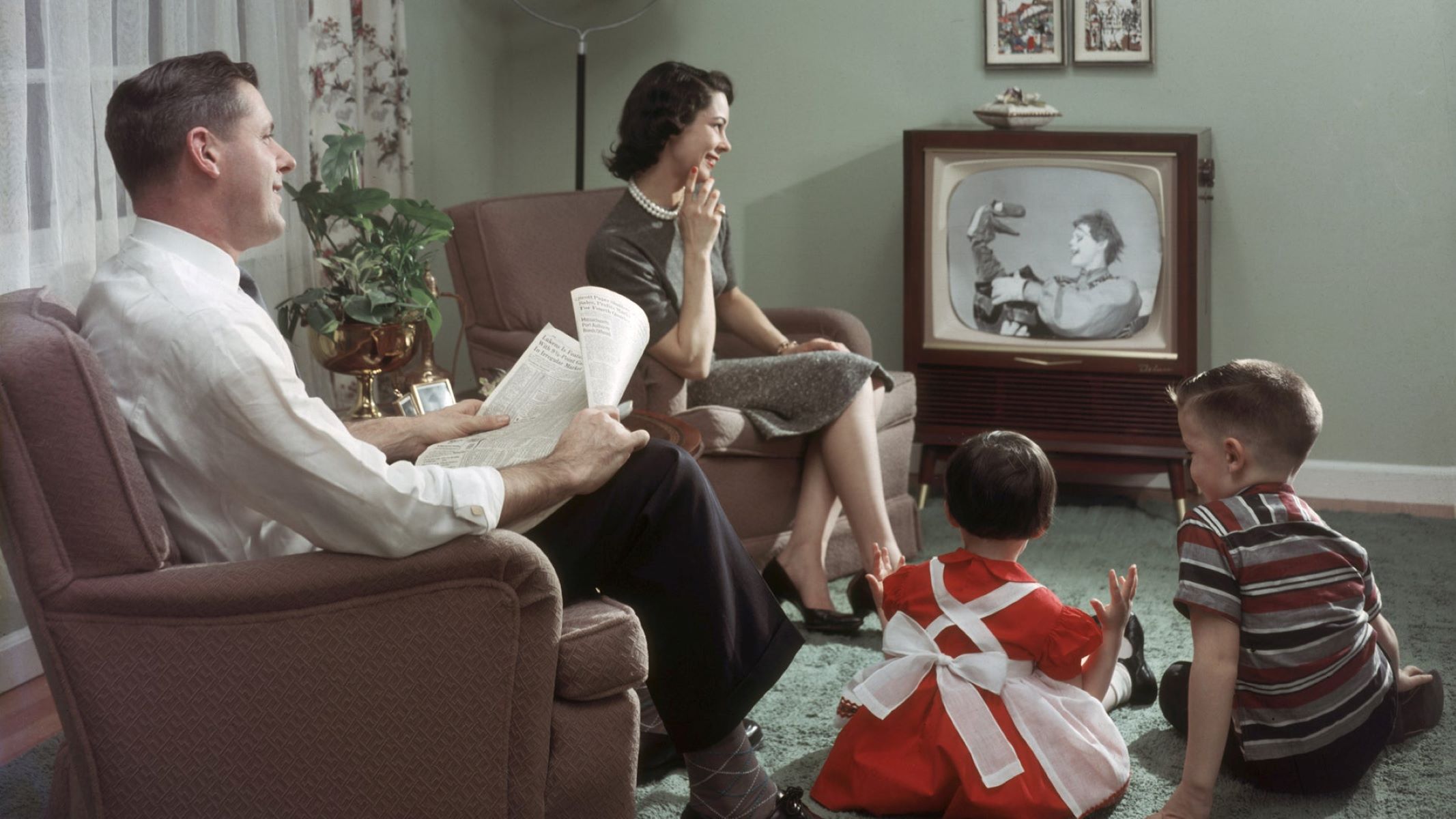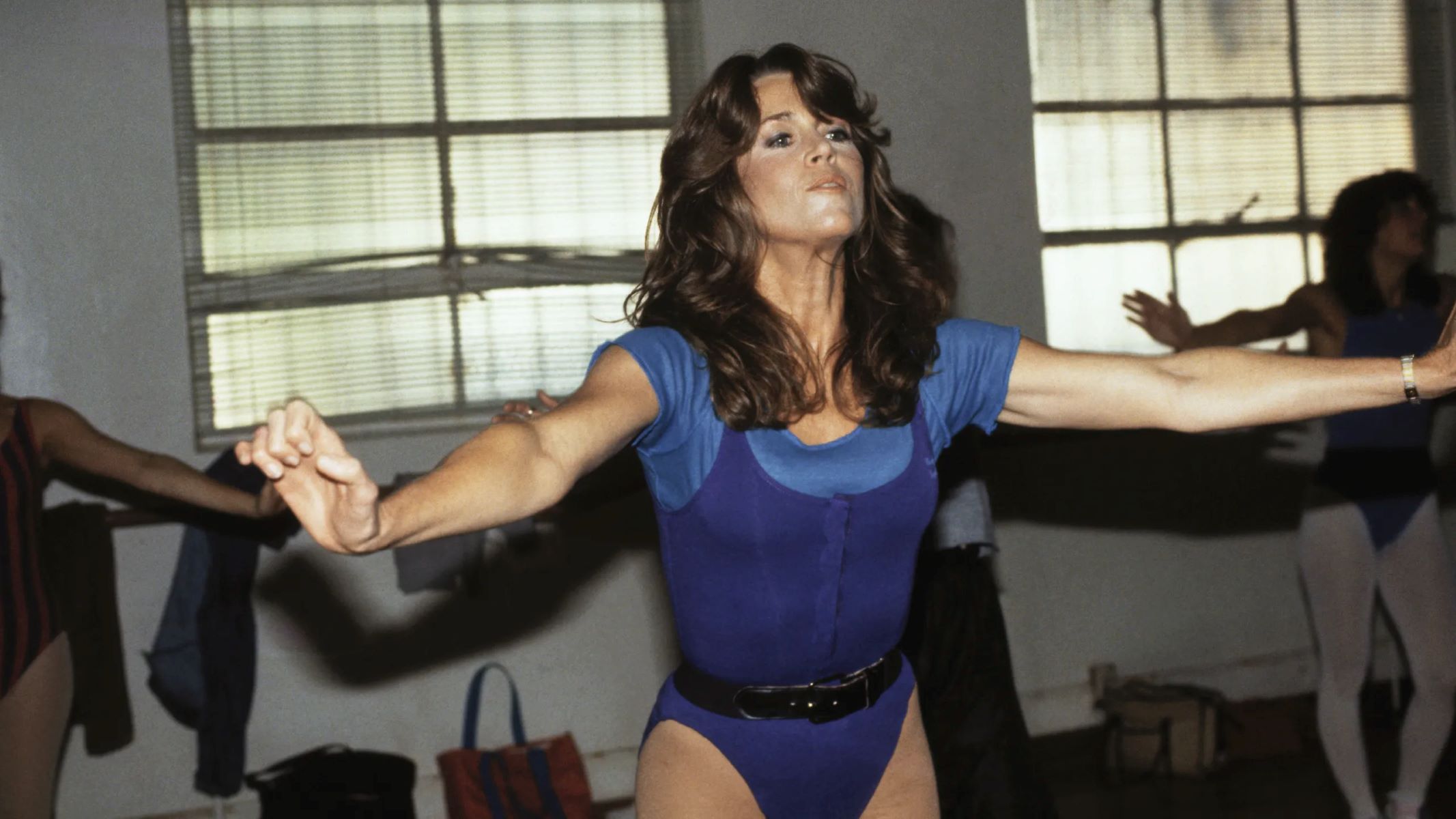Home>History>10 Ways The 1950’s Were Totally Different From Today


History
10 Ways The 1950’s Were Totally Different From Today
Published: January 11, 2024
Discover 10 fascinating ways the 1950s differed from modern times in this insightful look at history. Explore the stark contrasts between then and now!
(Many of the links in this article redirect to a specific reviewed product. Your purchase of these products through affiliate links helps to generate commission for Regretless.com, at no extra cost. Learn more)
Table of Contents
Introduction
The 1950s was a decade of significant transformation, characterized by a unique blend of post-war optimism, burgeoning consumerism, and the dawn of the modern age. This era, often romanticized for its wholesome charm and simpler way of life, stands in stark contrast to the fast-paced, technologically-driven world of today. As we delve into the differences between the 1950s and the present day, it becomes evident that this bygone era was a world away from our contemporary reality. From fashion and technology to social norms and civil rights, the disparities between these two periods are both striking and illuminating. Let's embark on a captivating journey through time, exploring 10 profound ways in which the 1950s diverged from the present day.
Fashion
In the 1950s, fashion was characterized by a sense of elegance, refinement, and conformity. Women's attire exuded a classic femininity, with full skirts, cinched waists, and tailored blouses epitomizing the iconic "New Look" popularized by renowned designer Christian Dior. The hourglass silhouette, accentuated by structured undergarments such as girdles and petticoats, was a hallmark of women's fashion during this era. Pastel hues, floral patterns, and demure accessories were favored, reflecting the prevailing emphasis on modesty and grace.
Contrastingly, contemporary fashion embodies a spirit of individuality and eclecticism, embracing a diverse range of styles and silhouettes. Gender-neutral fashion has gained prominence, challenging traditional sartorial norms and celebrating self-expression. The rise of athleisure wear and sustainable fashion further underscores the modern penchant for comfort, versatility, and ethical considerations.
The 1950s also witnessed a clear demarcation between formal and casual attire, with men donning tailored suits for most occasions. The ubiquitous fedora and polished leather shoes were emblematic of masculine style, reflecting a culture that prioritized sartorial sophistication and adherence to dress codes. In stark contrast, today's menswear is characterized by a fusion of formal and casual elements, with streetwear and minimalist aesthetics permeating mainstream fashion. The evolution of menswear reflects a shift towards relaxed, functional attire that mirrors the contemporary emphasis on practicality and self-expression.
The advent of fast fashion and digital influencers has revolutionized the way we consume and engage with fashion, fostering a culture of rapid trends and style experimentation. While the 1950s epitomized sartorial elegance and conformity, today's fashion landscape celebrates diversity, sustainability, and self-expression, reflecting the ever-changing tapestry of societal values and individual preferences.
Technology
In the 1950s, technological advancements were emblematic of an era on the cusp of profound change. This period witnessed the dawn of the space age, marked by the launch of Sputnik, the world's first artificial satellite, by the Soviet Union in 1957. The subsequent space race between the United States and the Soviet Union fueled a fervent pursuit of scientific innovation, leading to monumental achievements such as the establishment of NASA and the eventual moon landing in 1969.
Televisions, a burgeoning household staple, introduced families to a new form of entertainment and information dissemination. The advent of black-and-white television sets revolutionized mass media consumption, shaping popular culture and societal discourse. Television programming during the 1950s reflected the prevailing values and norms of the time, with wholesome family-oriented shows such as "I Love Lucy" and "The Ed Sullivan Show" captivating audiences across the nation.
Moreover, the 1950s witnessed the emergence of groundbreaking technologies that laid the foundation for the digital age. The development of the first commercially successful computer, UNIVAC I, heralded a new era of computational capabilities and data processing. This pioneering technology, although rudimentary by today's standards, paved the way for the digital revolution that has transformed every facet of contemporary life.
In stark contrast to the 1950s, today's technological landscape is characterized by unprecedented connectivity, instant access to information, and rapid innovation. The ubiquitous presence of smartphones, the internet, and social media has redefined communication, commerce, and social interaction. The advent of artificial intelligence, virtual reality, and blockchain technology has ushered in an era of unparalleled digital transformation, reshaping industries and redefining the boundaries of human potential.
The 1950s and the present day stand as distinct epochs in the annals of technological progress, each encapsulating the zeitgeist of its respective era. While the 1950s were marked by the nascent stages of space exploration and the advent of television, the contemporary era is characterized by the omnipresence of digital technology, the democratization of information, and the relentless pursuit of innovation. This juxtaposition illuminates the remarkable trajectory of human ingenuity, underscoring the transformative power of technology across generations.
Gender Roles
In the 1950s, gender roles were deeply entrenched in traditional norms, delineating distinct expectations for men and women within society. The prevailing ethos upheld the ideal of the nuclear family, wherein men were the primary breadwinners while women assumed the roles of homemakers and caregivers. This paradigm fostered a culture of rigid gender divisions, perpetuating the notion of separate spheres for men and women.
Women in the 1950s were expected to embody the archetype of domesticity, devoting themselves to maintaining an immaculate home and nurturing their families. The portrayal of women in popular media and advertising often reinforced these roles, depicting them as paragons of grace and domestic bliss. Magazines and television programs of the era frequently extolled the virtues of the "perfect housewife," emphasizing qualities such as subservience, gentility, and unwavering dedication to familial duties.
Conversely, men were expected to exude strength, stoicism, and authority as the providers and protectors of their households. The prevailing societal narrative positioned men as the primary decision-makers and leaders, tasked with shouldering the financial responsibilities of the family unit. This traditional model of masculinity emphasized the virtues of rugged individualism and economic prowess, shaping the expectations placed upon men within both the public and private spheres.
In contrast, contemporary society has witnessed a seismic shift in gender roles, marked by a redefinition of traditional constructs and the dismantling of antiquated stereotypes. The feminist movement, civil rights activism, and evolving societal attitudes have catalyzed a paradigm shift, fostering greater gender equality and inclusivity. Women have increasingly assumed leadership roles in various fields, challenging the glass ceiling and reshaping the landscape of professional and political spheres. Similarly, men have embraced more active roles in caregiving and domestic responsibilities, transcending the confines of traditional masculinity to embrace vulnerability, empathy, and emotional intelligence.
The evolution of gender roles reflects a broader cultural transformation, underscoring the ongoing pursuit of gender equity and social justice. While the 1950s epitomized a rigid dichotomy of gender roles, the contemporary era celebrates diversity, inclusivity, and the recognition of individual agency, fostering a more equitable and inclusive society for future generations.
Entertainment
In the 1950s, entertainment served as a cultural touchstone, reflecting the prevailing values, aspirations, and societal dynamics of the era. This period witnessed a transformative shift in the realm of popular culture, with television emerging as a dominant force in shaping public discourse and collective consciousness. The advent of black-and-white television sets revolutionized the entertainment landscape, offering families a window to the world beyond their immediate surroundings.
Television programming during the 1950s epitomized the idyllic portrayal of American life, featuring an array of family-oriented shows that resonated with audiences nationwide. Iconic programs such as "I Love Lucy," a groundbreaking sitcom starring Lucille Ball, captivated viewers with its comedic charm and endearing portrayal of marital dynamics. The show's unprecedented success not only showcased the immense influence of television as a medium but also catalyzed a shift in gender representation, with Lucille Ball emerging as a trailblazing figure in the male-dominated realm of entertainment.
Moreover, the 1950s heralded the golden age of Hollywood, with the silver screen enchanting audiences with timeless classics and cinematic masterpieces. The era witnessed the rise of legendary actors and actresses who became synonymous with the glamour and allure of Tinseltown. Icons such as Marilyn Monroe, James Dean, and Audrey Hepburn captivated audiences with their magnetic on-screen presence, leaving an indelible imprint on the collective imagination of the time.
In contrast, contemporary entertainment has undergone a profound metamorphosis, propelled by the proliferation of digital media, streaming platforms, and on-demand content. The advent of streaming services has revolutionized the consumption of entertainment, offering viewers unparalleled access to a diverse array of content across various genres and formats. The rise of binge-watching culture has transformed the dynamics of audience engagement, empowering viewers to immerse themselves in immersive narratives and serialized storytelling.
Furthermore, the advent of social media and digital platforms has democratized the creation and dissemination of entertainment, fostering a vibrant ecosystem of user-generated content and independent creators. The rise of influencers, vloggers, and content creators has redefined the contours of celebrity culture, blurring the lines between traditional stardom and grassroots influence. This democratization of entertainment has engendered a more inclusive and participatory landscape, amplifying diverse voices and narratives that resonate with global audiences.
The evolution of entertainment from the 1950s to the present day underscores the enduring power of storytelling and cultural expression, reflecting the ever-changing tapestry of human creativity and collective imagination. While the 1950s epitomized the golden age of television and Hollywood glamour, the contemporary era celebrates the democratization of entertainment, embracing diversity, and empowering audiences to shape the cultural zeitgeist.
Transportation
In the 1950s, transportation underwent a profound evolution, encapsulating the spirit of progress and innovation that defined the post-war era. Automobiles emerged as potent symbols of freedom, mobility, and prosperity, reshaping the fabric of American society and redefining the concept of travel. The 1950s witnessed the zenith of the automotive industry, with iconic vehicles such as the Chevrolet Bel Air, Ford Thunderbird, and Cadillac Eldorado capturing the collective imagination with their sleek designs and powerful engines.
The proliferation of interstate highways, epitomized by the landmark Interstate Highway Act of 1956, revolutionized long-distance travel and interstate commerce, facilitating unprecedented connectivity and economic growth. This monumental infrastructure initiative, spearheaded by President Dwight D. Eisenhower, engendered a vast network of highways that crisscrossed the nation, heralding a new era of automotive mobility and suburban expansion. The advent of drive-in theaters, diners, and motels along these highways further underscored the cultural significance of automobile travel, shaping the quintessential American road trip experience that endures in popular imagination to this day.
Contrastingly, contemporary transportation reflects a paradigm shift towards sustainability, electrification, and urban mobility. The advent of electric vehicles (EVs), coupled with advancements in autonomous driving technology, has redefined the contours of automotive innovation, heralding a new era of eco-conscious mobility and smart infrastructure. The rise of ride-sharing services and the proliferation of public transit initiatives underscore a growing emphasis on sustainable urban mobility, fostering a more interconnected and environmentally conscious approach to transportation.
Furthermore, the 1950s heralded the golden age of commercial aviation, with the advent of jet travel revolutionizing long-distance air transportation. The introduction of iconic jetliners such as the Boeing 707 and the Douglas DC-8 epitomized the allure of air travel, shrinking distances and transcending borders with unprecedented speed and efficiency. The dawn of the Jet Age transformed the dynamics of global connectivity, catalyzing a surge in international tourism and fostering a newfound sense of global interconnectedness.
In contrast, contemporary air travel has evolved to accommodate the demands of a globalized world, with state-of-the-art aircraft, advanced safety protocols, and streamlined passenger experiences redefining the modern aviation landscape. The advent of supersonic travel and the pursuit of sustainable aviation initiatives underscore the relentless pursuit of innovation and efficiency within the aerospace industry, reflecting a commitment to shaping the future of air transportation.
The evolution of transportation from the 1950s to the present day encapsulates the remarkable trajectory of human ingenuity and societal progress, underscoring the enduring pursuit of mobility, connectivity, and sustainable innovation. While the 1950s epitomized the ascendancy of automotive culture and the Jet Age, the contemporary era heralds a new frontier of electric mobility, smart infrastructure, and sustainable aviation, reflecting the ever-changing landscape of human mobility and progress.
Family Life
In the 1950s, family life was emblematic of a paradigm centered around traditional values, familial cohesion, and the idealized concept of the nuclear family. The post-war era ushered in an unprecedented era of economic prosperity and social stability, fostering a collective ethos that extolled the virtues of domesticity, community, and generational continuity. The prevailing societal narrative exalted the sanctity of marriage, parenthood, and familial duty, shaping the contours of everyday life for millions of Americans.
The archetype of the nuclear family, comprising a breadwinning father, a devoted homemaker mother, and their children, epitomized the quintessential familial unit of the 1950s. The home served as the epicenter of familial life, embodying a sanctuary of warmth, security, and shared values. The post-war baby boom engendered a surge in childbirths, catalyzing a demographic shift that underscored the centrality of family life within the cultural landscape.
Moreover, the 1950s witnessed the proliferation of suburban communities, characterized by idyllic neighborhoods, spacious homes, and a burgeoning sense of community kinship. The advent of Levittown, the iconic suburban development, symbolized the aspirations of countless families seeking a tranquil, idyllic existence away from the urban bustle. This suburban exodus fostered a sense of communal solidarity, engendering a close-knit social fabric that permeated everyday interactions and shared experiences.
The dynamics of family life in the 1950s were further shaped by prevailing gender roles, with women assuming the primary responsibility for domestic duties and child-rearing, while men served as the primary providers and authority figures. This traditional division of labor underscored the prevailing societal norms, perpetuating a culture of distinct gender roles and familial expectations.
In stark contrast, contemporary family life reflects a diverse tapestry of familial structures, values, and dynamics, underscoring a departure from the traditional nuclear family paradigm. The evolution of gender roles, the legalization of same-sex marriage, and the rise of single-parent households have reshaped the contours of modern family life, fostering greater inclusivity and recognition of diverse familial configurations.
The advent of digital connectivity, remote work, and globalized mobility has redefined the dynamics of familial interactions, transcending geographical barriers and fostering interconnectedness across diverse cultural landscapes. The contemporary era celebrates the plurality of familial experiences, embracing diverse forms of kinship, caregiving arrangements, and communal support networks.
The evolution of family life from the 1950s to the present day encapsulates the enduring resilience of familial bonds, the transformative impact of societal change, and the timeless pursuit of love, kinship, and generational continuity. While the 1950s epitomized the idealized vision of the nuclear family, the contemporary era heralds a more expansive and inclusive understanding of familial dynamics, reflecting the ever-changing tapestry of human relationships and shared experiences.
This section is a detailed exploration of the evolution of family life from the 1950s to the present day, highlighting the transformative impact of societal change and the enduring resilience of familial bonds.
Work Life
In the 1950s, the landscape of work life was emblematic of a post-war economic boom, characterized by a burgeoning industrial sector, the rise of corporate America, and a prevailing culture of corporate loyalty and job security. The era witnessed a paradigm centered around the archetype of the "company man," wherein individuals sought long-term employment within established corporations, often dedicating their entire careers to a single organization. This ethos of corporate allegiance fostered a sense of stability, predictability, and hierarchical structures within the workplace, shaping the dynamics of professional life for millions of Americans.
Moreover, the 1950s heralded the ascendance of manufacturing and industrial production, with the automotive, steel, and consumer goods sectors driving economic growth and employment opportunities. The proliferation of labor unions and collective bargaining further underscored the evolving dynamics of labor relations, empowering workers to advocate for fair wages, workplace safety standards, and equitable treatment.
The prevailing gender dynamics within the workplace reflected traditional norms, with men predominantly occupying leadership positions and managerial roles, while women were often relegated to clerical, administrative, or service-oriented positions. This gendered division of labor underscored the entrenched disparities within the professional sphere, perpetuating a culture of gender-based discrimination and limited opportunities for career advancement.
In stark contrast, contemporary work life reflects a paradigm shift towards flexibility, entrepreneurship, and a dynamic gig economy. The advent of digital technology, remote work capabilities, and the democratization of information has redefined the contours of professional engagement, empowering individuals to pursue non-traditional career paths, freelance opportunities, and remote work arrangements. The rise of female leadership, diversity initiatives, and inclusive workplace policies has catalyzed a renaissance of gender equity and representation within the professional sphere, fostering greater opportunities for women in leadership roles, STEM fields, and entrepreneurial endeavors.
The evolution of work life from the 1950s to the present day encapsulates the transformative impact of technological innovation, shifting societal attitudes, and the enduring pursuit of professional fulfillment and economic empowerment. While the 1950s epitomized a corporate-centric model of work life, the contemporary era heralds a more diverse, inclusive, and fluid landscape of professional engagement, reflecting the ever-changing tapestry of human labor, creativity, and economic progress.
Social Etiquette
In the 1950s, social etiquette was deeply entrenched in a set of prescribed norms, decorum, and behavioral expectations that governed interpersonal interactions and public conduct. This era was characterized by a pervasive adherence to traditional codes of politeness, formality, and social hierarchy, shaping the dynamics of everyday interactions and communal engagements. The fabric of social etiquette was woven with intricacies that underscored the importance of propriety, refinement, and adherence to established customs.
Social gatherings and formal events were governed by a stringent set of etiquette rules, delineating protocols for introductions, greetings, and conversational decorum. The art of conversation was imbued with a sense of cultivated eloquence, attentiveness, and deference, reflecting the prevailing emphasis on refined communication and intellectual engagement. Furthermore, the exchange of written correspondence, including letters and invitations, adhered to meticulous standards of penmanship, salutations, and expressions of gratitude, embodying the art of thoughtful communication and courtesy.
Moreover, the realm of dining etiquette epitomized the meticulous observance of table manners, seating arrangements, and culinary rituals that underscored the nuances of social refinement and gracious hospitality. Formal dining occasions demanded a mastery of proper utensil usage, dining posture, and a keen awareness of dining protocols, reflecting the enduring significance of shared meals as a conduit for social cohesion and conviviality.
In contrast, contemporary social etiquette reflects a more relaxed, inclusive, and egalitarian approach to interpersonal interactions, transcending rigid formalities and embracing the ethos of authenticity, empathy, and inclusivity. The democratization of social spaces, the rise of diverse cultural influences, and the celebration of individual expression have redefined the contours of modern etiquette, fostering a more nuanced understanding of interpersonal dynamics and communal engagement.
The evolution of social etiquette from the 1950s to the present day underscores the enduring legacy of civility, respect, and cultural refinement, reflecting the ever-changing tapestry of human interaction and social dynamics. While the 1950s epitomized a formalized, hierarchical model of social etiquette, the contemporary era heralds a more inclusive, empathetic, and diverse landscape of interpersonal engagement, encapsulating the timeless pursuit of mutual respect, understanding, and collective harmony.
Civil Rights Movement
The Civil Rights Movement of the 1950s and 1960s stands as a watershed moment in American history, catalyzing a seismic shift in societal attitudes, legislative reform, and the pursuit of racial equality. This transformative movement, rooted in the enduring quest for justice and human dignity, confronted entrenched racial segregation, systemic discrimination, and pervasive inequality that permeated every facet of American society.
The 1950s witnessed the emergence of a resolute resolve to dismantle the pernicious edifice of racial injustice, epitomized by landmark events such as the Montgomery Bus Boycott and the pivotal Supreme Court decision in Brown v. Board of Education. The indomitable spirit of civil rights leaders, including Martin Luther King Jr., Rosa Parks, and Thurgood Marshall, galvanized a wave of grassroots activism, nonviolent resistance, and legal advocacy that reverberated across the nation.
The Civil Rights Movement of the 1950s set the stage for the historic March on Washington in 1963, where Martin Luther King Jr. delivered his iconic "I Have a Dream" speech, igniting the collective conscience of the nation and propelling the quest for racial justice to the forefront of the national discourse. This watershed moment underscored the power of nonviolent protest, moral persuasion, and the unyielding pursuit of equality in the face of adversity.
Moreover, the Civil Rights Act of 1964 and the Voting Rights Act of 1965 crystallized the legislative triumphs of the movement, enshrining fundamental civil rights protections and dismantling institutional barriers to full citizenship and political participation. These legislative milestones, coupled with the enduring legacy of the Civil Rights Movement, heralded a new era of progress, hope, and the relentless pursuit of equality for all Americans.
The enduring legacy of the Civil Rights Movement reverberates across generations, underscoring the enduring imperative of justice, equality, and the recognition of human rights. While the 1950s epitomized a crucible of social upheaval and moral awakening, the contemporary era stands as a testament to the enduring impact of the Civil Rights Movement, fostering a more inclusive, equitable, and just society for future generations.













